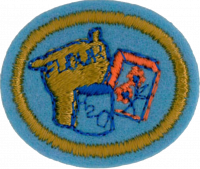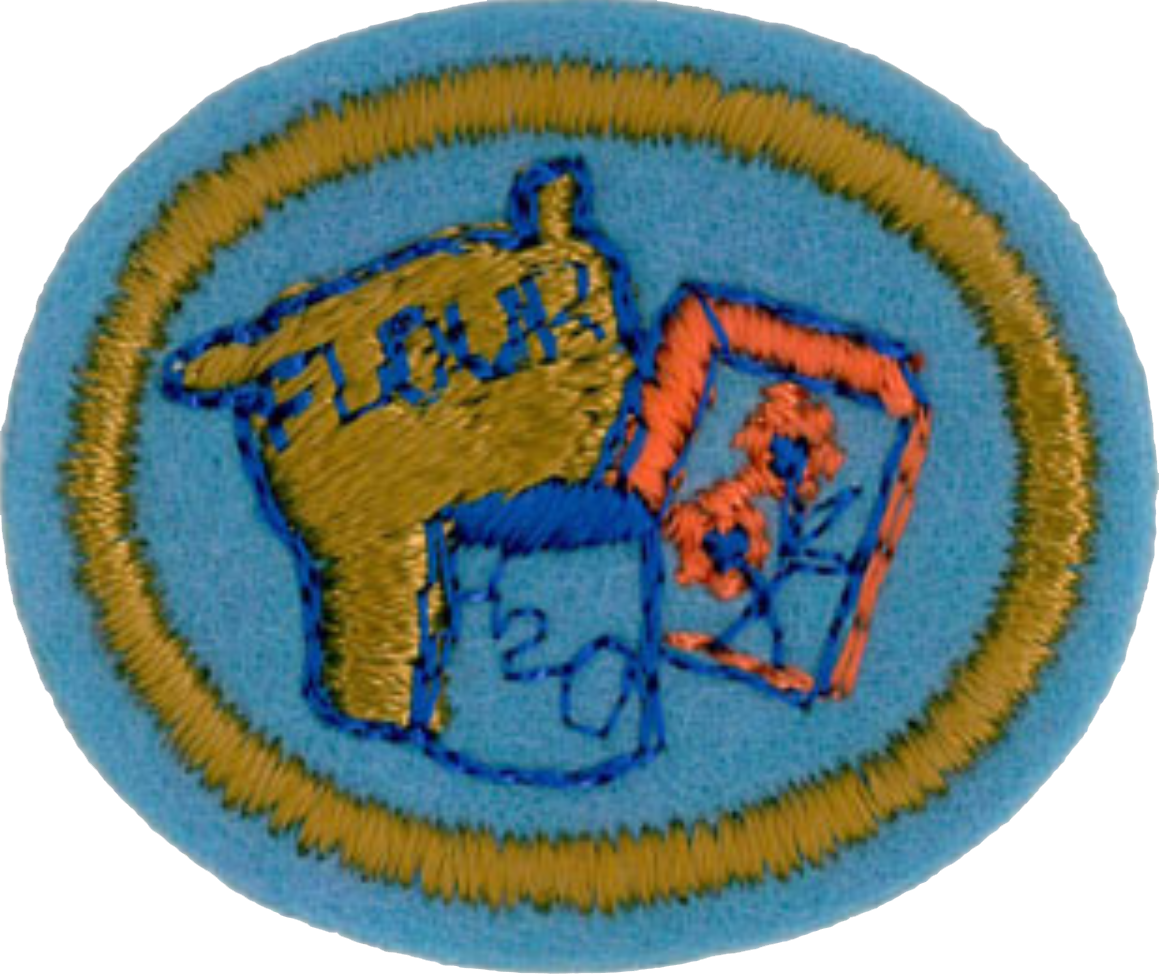Difference between revisions of "AY Honors/Bread Dough/Answer Key/es"
m (FuzzyBot moved page Adventist Youth Honors Answer Book/Arts and Crafts/Bread Dough/es to Respuestas para la especialidad JA de Arte en masa de pan without leaving a redirect: Part of translatable page "Adventist Youth Honors Answer Book/Arts and Crafts/Bread Dough") |
(Updating to match new version of source page) |
||
| Line 1: | Line 1: | ||
| − | + | {{HonorSubpage}} | |
| − | < | + | <section begin="Body" /> |
| − | {{ | + | {{ansreq|page={{#titleparts:{{PAGENAME}}|2|1}}|num=1}} |
| − | | | + | <noinclude></noinclude><!-- instance 1 --> |
| − | | | + | <!-- 1. Hacer una lista de los materiales y los enseres que se necesitan para el arte en masa de pan. --> |
| − | | | ||
| − | | | ||
| − | |||
| − | |||
| − | |||
| − | }} | ||
| − | |||
| − | |||
{{clear}} | {{clear}} | ||
| Line 21: | Line 13: | ||
{{clear}} | {{clear}} | ||
| − | ==2. ¿Por qué es importante tener las manos limpias y usar loción para las manos cuando se trabaja con masa de pan? | + | <noinclude></noinclude> |
| + | {{CloseReq}} <!-- 1 --> | ||
| + | {{ansreq|page={{#titleparts:{{PAGENAME}}|2|1}}|num=2}} | ||
| + | <noinclude></noinclude><!-- instance 1 --> | ||
| + | <!-- 2. ¿Por qué es importante tener las manos limpias y usar loción para las manos cuando se trabaja con masa de pan? --> | ||
| − | ==3. Explicar los diferentes procedimientos que se emplean para teñir y pintar la masa. | + | <noinclude></noinclude> |
| + | {{CloseReq}} <!-- 2 --> | ||
| + | {{ansreq|page={{#titleparts:{{PAGENAME}}|2|1}}|num=3}} | ||
| + | <noinclude></noinclude><!-- instance 1 --> | ||
| + | <!-- 3. Explicar los diferentes procedimientos que se emplean para teñir y pintar la masa. --> | ||
{{clear}} | {{clear}} | ||
| Line 29: | Line 29: | ||
{{clear}} | {{clear}} | ||
| − | ==4. ¿Qué | + | <noinclude></noinclude> |
| + | {{CloseReq}} <!-- 3 --> | ||
| + | {{ansreq|page={{#titleparts:{{PAGENAME}}|2|1}}|num=4}} | ||
| + | <noinclude></noinclude><!-- instance 1 --> | ||
| + | <!-- 4. ¿Qué tipo de acabado se usa para proteger y dar una apariencia brillante a la masa de pan? --> | ||
| − | ==5. Realizar por lo menos | + | <noinclude></noinclude> |
| + | {{CloseReq}} <!-- 4 --> | ||
| + | {{ansreq|page={{#titleparts:{{PAGENAME}}|2|1}}|num=5}} | ||
| + | <noinclude></noinclude><!-- instance 1 --> | ||
| + | <!-- 5. Realizar por lo menos dos diferentes flores con hojas como la rosa, la margarita, el narciso, el cornejo, la violeta, el jacinto de uva, el clavel, el lirio, el pensamiento, la amapola, la flor de pascua, el tulipán y la nomeolvides (se puede usar cortadores de masa). Arréglelos usando recipientes de su elección (algunas sugerencias: canastas pequeñas, conchas, olla, etc.). --> | ||
{{clear}} | {{clear}} | ||
| Line 41: | Line 49: | ||
{{clear}} | {{clear}} | ||
| − | ==6. Realizar uno de los siguientes elementos usando masa teñida: | + | <noinclude></noinclude> |
| − | == | + | {{CloseReq}} <!-- 5 --> |
| + | {{ansreq|page={{#titleparts:{{PAGENAME}}|2|1}}|num=6}} | ||
| + | <noinclude></noinclude><!-- instance 1 --> | ||
| + | <!-- 6. Realizar uno de los siguientes elementos usando masa teñida: --> | ||
| + | {{ansreq|page={{#titleparts:{{PAGENAME}}|2|1}}|num=6a}} | ||
{{clear}} | {{clear}} | ||
| − | === | + | <noinclude></noinclude> |
| + | {{CloseReq}} <!-- 6a --> | ||
| + | {{ansreq|page={{#titleparts:{{PAGENAME}}|2|1}}|num=6b}} <!--T:18--> | ||
| + | <noinclude><div lang="en" dir="ltr" class="mw-content-ltr"> | ||
| + | </noinclude><!-- instance 2 --> | ||
| + | For this, you may wish to roll a piece of dough out into a flat sheet with even thickness, and then use a knife (or a cookie cutter) to cut out the plaque. Then you can use a different color of dough and apply it to the surface of the plaque to make the design of your choosing. | ||
| + | </div> | ||
| − | == | + | <div lang="en" dir="ltr" class="mw-content-ltr"> |
| − | === | + | <noinclude> |
| + | </div></noinclude> | ||
| + | {{CloseReq}} <!-- 6b --> | ||
| + | {{CloseReq}} <!-- 6 --> | ||
| + | {{ansreq|page={{#titleparts:{{PAGENAME}}|2|1}}|num=7}} | ||
| + | <noinclude><div lang="en" dir="ltr" class="mw-content-ltr"> | ||
| + | </noinclude><!-- instance 1 --> | ||
| + | <!-- 7. Make one of the following: --> | ||
| + | {{ansreq|page={{#titleparts:{{PAGENAME}}|2|1}}|num=7a}} | ||
| + | You will need strong glue and magnets. Magnets are available in craft stores or at hobby shops. A five-minute epoxy may be the best type of glue for this project, as it will adhere well to both the magnet and the dough. Press the magnet into the dough while it is still wet, but remove it before painting. You can glue it into the cavity after painting. It may help to add a coat of clear gloss finish after attaching the magnet, as this will help hold the magnet in place. | ||
| + | </div> | ||
| − | === | + | <div lang="en" dir="ltr" class="mw-content-ltr"> |
| + | <noinclude> | ||
| + | </div></noinclude> | ||
| + | {{CloseReq}} <!-- 7a --> | ||
| + | {{ansreq|page={{#titleparts:{{PAGENAME}}|2|1}}|num=7b}} <!--T:20--> | ||
| + | <noinclude><div lang="en" dir="ltr" class="mw-content-ltr"> | ||
| + | </noinclude><!-- instance 2 --> | ||
| + | You can use regular safety pins or buy blank pins at a craft store. The blanks sold at craft stores resemble the pins Pathfinders receive when they are invested in their AY classes, or the pins that are traded at camporees, except the display side is totally blank and smooth. | ||
| + | </div> | ||
| + | <div class="mw-translate-fuzzy"> | ||
{{clear}} | {{clear}} | ||
| + | </div> | ||
| − | === | + | <div lang="en" dir="ltr" class="mw-content-ltr"> |
| + | <noinclude> | ||
| + | </div></noinclude> | ||
| + | {{CloseReq}} <!-- 7b --> | ||
| + | {{ansreq|page={{#titleparts:{{PAGENAME}}|2|1}}|num=7c}} <!--T:22--> | ||
| + | <noinclude><div lang="en" dir="ltr" class="mw-content-ltr"> | ||
| + | </noinclude><!-- instance 2 --> | ||
| + | This is your opportunity to show your creativity. Let your imagination run free. | ||
| + | </div> | ||
| + | <div lang="en" dir="ltr" class="mw-content-ltr"> | ||
| + | <noinclude> | ||
| + | </div></noinclude> | ||
| + | {{CloseReq}} <!-- 7c --> | ||
| + | {{CloseReq}} <!-- 7 --> | ||
| + | <noinclude><div class="mw-translate-fuzzy"> | ||
==Referencias== | ==Referencias== | ||
| + | </div> | ||
| + | <div class="mw-translate-fuzzy"> | ||
[[Category:Adventist Youth Honors Answer Book/es]] | [[Category:Adventist Youth Honors Answer Book/es]] | ||
[[Category:Adventist Youth Honors Answer Book/Do at home/es|{{#titleparts:{{PAGENAME}}|-1|-2}}]] | [[Category:Adventist Youth Honors Answer Book/Do at home/es|{{#titleparts:{{PAGENAME}}|-1|-2}}]] | ||
| − | <noinclude></noinclude> | + | <noinclude> |
| + | </div></noinclude> | ||
| + | {{CloseHonorPage}} | ||
Revision as of 13:48, 26 April 2021
Nivel de destreza
1
Año
1976
Version
10.11.2025
Autoridad de aprobación
Asociación General
1
2
3
4
5
6
6a
6b
For this, you may wish to roll a piece of dough out into a flat sheet with even thickness, and then use a knife (or a cookie cutter) to cut out the plaque. Then you can use a different color of dough and apply it to the surface of the plaque to make the design of your choosing.
7
7a
You will need strong glue and magnets. Magnets are available in craft stores or at hobby shops. A five-minute epoxy may be the best type of glue for this project, as it will adhere well to both the magnet and the dough. Press the magnet into the dough while it is still wet, but remove it before painting. You can glue it into the cavity after painting. It may help to add a coat of clear gloss finish after attaching the magnet, as this will help hold the magnet in place.
7b
You can use regular safety pins or buy blank pins at a craft store. The blanks sold at craft stores resemble the pins Pathfinders receive when they are invested in their AY classes, or the pins that are traded at camporees, except the display side is totally blank and smooth.
7c
This is your opportunity to show your creativity. Let your imagination run free.


